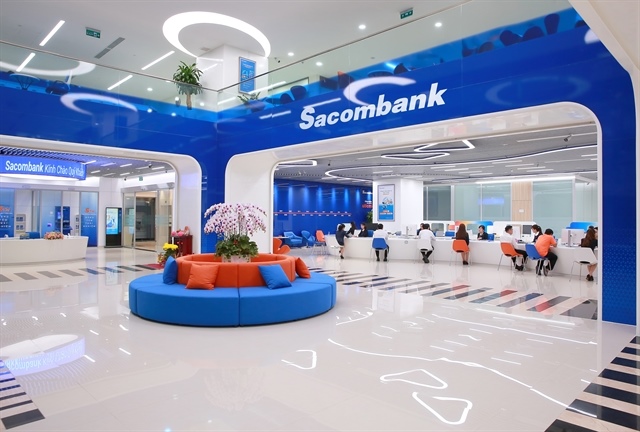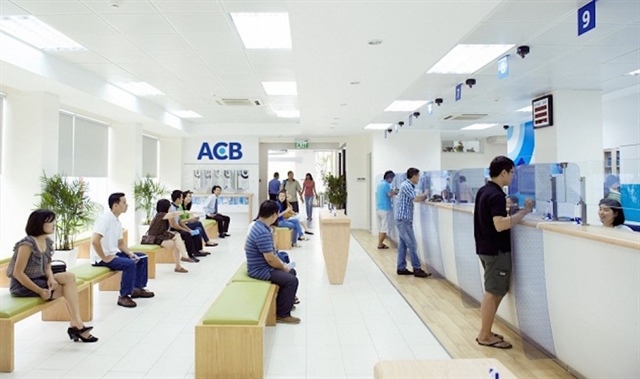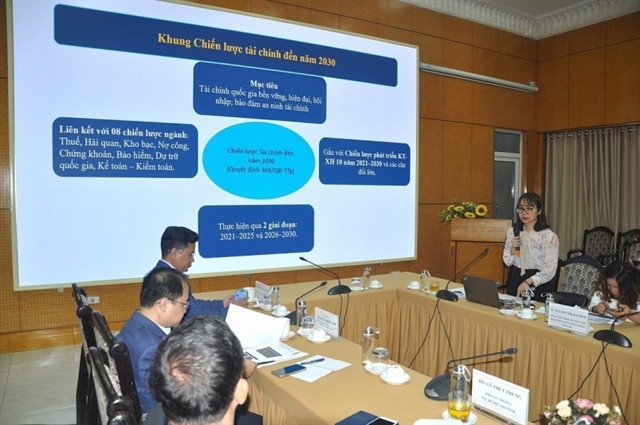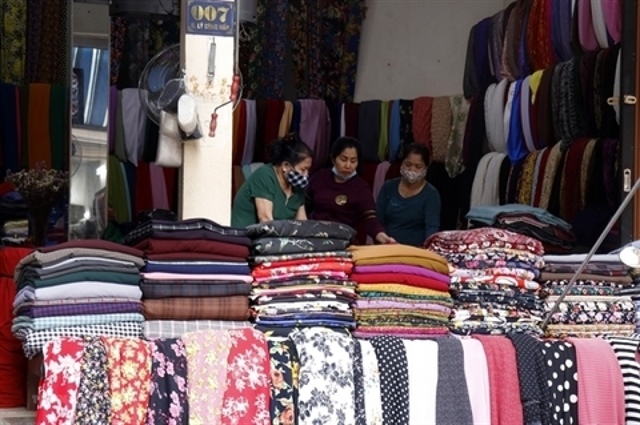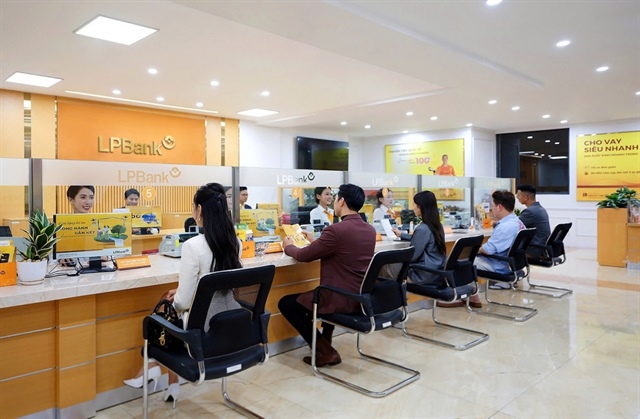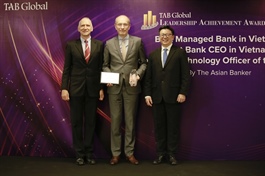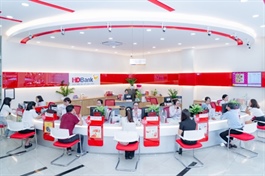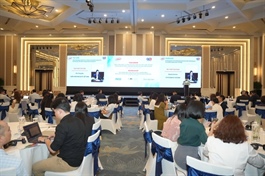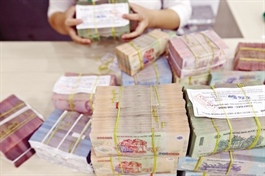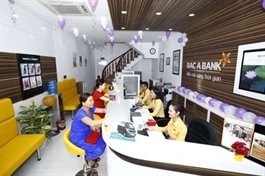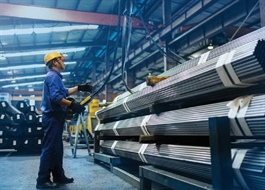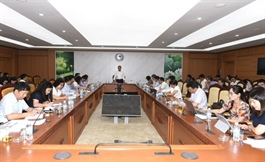Businesses await financial mechanism for switching to electric buses, taxis
Businesses await financial mechanism for switching to electric buses, taxis
To meet the target of a 100 per cent electric or green energy bus fleet by 2030, the Hà Nội Department of Construction is reviewing and updating a plan to convert fossil-fuel vehicles to electric/green ones, tailored to each transport type of bus, taxi, contract vehicle or special-use vehicle.
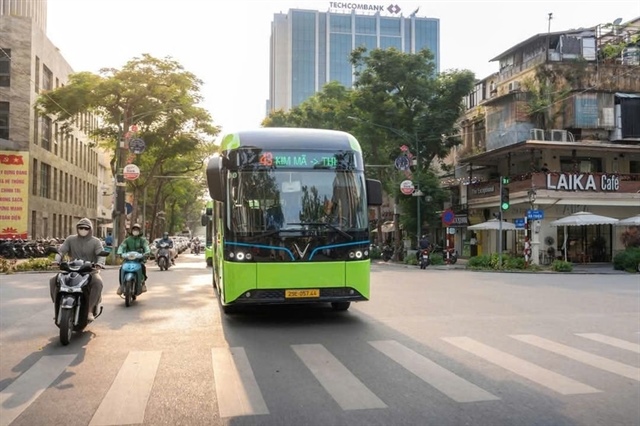
An electric bus on Ring Road 1 in Hà Nội. VNA/VNS Photo |
Passenger transport enterprises are accelerating the transition to electric vehicles, as Hà Nội gets ready to ban petrol-powered motorbikes from 1 July 2026.
However, the city also needs to implement mechanisms and financial policies to support enterprises purchasing electric vehicles.
According to a report by the city's Department of Construction, as of July, Hà Nội has 16 fully electric bus routes with a total of 248 vehicles, accounting for 12.9 per cent of the total subsidised bus fleet and surpassing the 2025 target.
Meanwhile, for taxis, there are currently 65 operators with a combined total of 18,612 vehicles.
Under the Prime Minister’s Decision 876/QĐ-TTg, starting in 2030, newly invested taxis must be electric. By the end of June, 8,831 taxis had been electrified, making up 47.4 per cent of the total taxi fleet. Twenty-three operators have submitted plans to the Department of Construction in which they commit to 100 per cent electric vehicle replacement for retired vehicles by 2030.
As for the TNGo public bicycle service, as of July, there are 118 docking stations within the Ring Road 3 area holding a total of 1,100 bikes: 1,000 pedal bicycles and 100 electric-assisted bicycles operating around the clock.
During its pilot phase, TNGo contributed to promoting a green city image and met travel demand effectively, helping connect public transport and reduce congestion and pollution.
However, electric bikes did not meet expectations due to high failure rates, weak batteries and costly maintenance, which caused inconvenience for users.
While acknowledging the encouraging progress in the transition to greener transport, Deputy Director of the Department of Construction Đào Việt Long said that initial investment costs for electric and clean energy vehicles, including buses, taxis, contract vehicles and special-use vehicles, remain significantly higher than traditional fossil-fuel vehicles.
“Aside from vehicle costs, enterprises must also invest in compatible charging systems, designated parking and maintenance facilities, raising total capital investment substantially and causing financial strain,” Long said.
For electric buses, due to their limited range and long charging time, operators need 40-50 per cent more vehicles to maintain the same capacity and frequency of service as diesel buses.
Similarly, for electric taxis and contract vehicles, the lack of charging infrastructure and high battery replacement costs remain key barriers preventing many companies from making the transition.
“To date, no concrete, sufficiently attractive financial mechanism has been introduced to encourage transport enterprises to switch to electric vehicles,” Long said.
“The lack of support policies like credit incentives, tax exemptions on imported components, charging infrastructure subsidies or direct price subsidies for green vehicles makes it difficult for businesses to access capital, especially small and medium-sized enterprises,” he added.
After launching four electric bus routes in early 2025, Nguyễn Thanh Nam, general director of Hà Nội Transport Corporation (Transerco), also highlighted challenges in the green transition process.
The Hà Nội People’s Committee previously ordered that a price and cost framework for small and mid-sized electric buses must be issued by the second quarter of 2025 to facilitate enterprise procurement, but this has yet to be completed.
“If there are no mechanisms to support capital access and interest subsidies, it will be difficult for businesses to proceed,” Nam said.
“For instance, Transerco’s projected capital requirement for more than 1,000 vehicles from now to 2030 is more than three times the company’s financial capacity. Therefore, we hope the city will soon pass a resolution on clean energy vehicle policies,” he added.
Support mechanisms and policies are needed
To meet the target of a 100 per cent electric or green energy bus fleet by 2030, the Hà Nội Department of Construction is reviewing and updating a plan to convert fossil-fuel vehicles to electric/green ones, tailored to each transport type of bus, taxi, contract vehicle or special-use vehicle, while proposing the Government and relevant ministries issue specific support policies like credit incentives, tax relief and direct vehicle subsidies, especially for public transport firms.
The city will also prepare a plan to organise mini-bus routes along narrow inner-city streets in the Ring Road 1 area to connect and transfer passengers in line with the Low Emission Zone Plan, which will be submitted to the People’s Committee in the third quarter this year.
This year, the city will launch six new bus routes connecting with stations along the Nhổn–Hà Nội Station and Cát Linh–Hà Đông metro lines using small- and medium-sized electric or green energy buses.
By 2026, Hà Nội will complete policy mechanisms to support businesses converting to electric or green energy buses; expand the electric bus network; build charging infrastructure including fast-charging stations; apply modern technology in management and operations; and intensify public awareness campaigns. The green bus fleet transition rate is expected to reach 20–23 per cent by 2026.
From 2027–2030, Hà Nội will carry out the transition as planned and fully convert all petrol and diesel buses to electric or green ones no later than 2030; expand charging networks for efficiency; and enhance the bus network for better connectivity and capacity.
Hà Nội will also provide a support cap of 100 per cent of loan contract value for the entire loan period (up to ten years) under each project for enterprises investing in public passenger transport infrastructure and services, including procurement of electric/green buses and associated infrastructure (transformer stations, charging stations, gas stations) as part of enterprise-led project proposals.
- 09:06 31/07/2025


